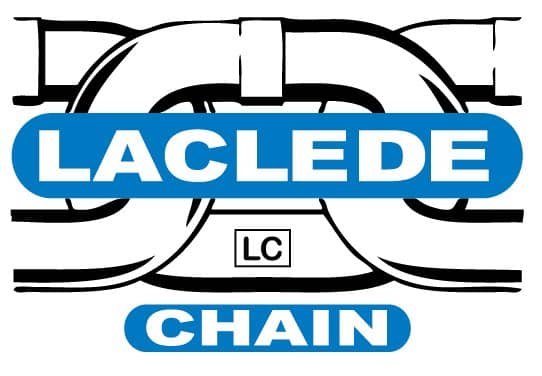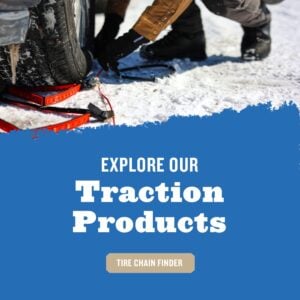Traction Chain 101: Driving in a Winter Wonderland
Winter is just around the corner and with it comes adverse weather conditions including driving challenges on snowy and icy roads. To safely get to where you need to go, you need your tires to grip the road and that’s why it’s good to have traction chains as part of your vehicle safety kit for when the road gets rough. Tire chains are legal to use in snow and ice in all states.
 What are Traction Chains?
What are Traction Chains?
Traction chains are chains or cables that are secured around tires to enhance traction, handling and braking on snowy and icy roads. Tire chains should only be used if there is a layer of snow or ice on the road as using chains on bare pavement accelerates product wear and can lead to premature failure and potential damage. If you turn onto a road that’s clearly been plowed and salted, pull over in a safe spot and remove the chains.
When traction chains are used, keep the vehicle speed at a maximum of 30 mph. Two-wheel drive vehicles require chains to be attached to tires on the drive axle and for all-wheel drive check your vehicle owners manual for recommendations.
Getting the Proper Chains for Your Tires
While traction chains can improve performance in heavy winter conditions it’s important to get the right chain for your vehicle type and tire size. When choosing traction chains, first, check your vehicle owners manual for usage specifications and potential restrictions.
It’s Important to Consider:
Tire Size: Tire chains come in many sizes and each stock number fits a range of tire sizes. You can determine your vehicle’s tire size by checking the letters and numbers on the tire sidewall. The first two or three numbers grouped together reflect the tread width, the middle two numbers signify the aspect ratio and the last two digits are the wheel size.
Installation: Always test fit your tire chains after purchasing to check for proper fitment and to gain familiarity with the installation process. Actual traction chain fitments can vary due to dimensional variances in tire manufacturing. When using tire chains it is important to periodically re-tighten the chains for maximum performance and product life.
Link Type and Cross Chain Configuration: The different shapes of cross chain links and configurations on the tire tread bring different advantages and usage characteristics. Square-shaped links provide extra bite and more evenly distributed wear patterns across the links. Square links in a diamond configuration, as in the Laclede Alpine series, provide a smoother, quieter ride. Twisted round links offer great traction and are suitable for over-the-road and off-road. Cables are a lighter weight, economical option. There are many other options, including chain alternatives like the new Alpha Trax series, so if you need help finding the right traction chains for your tires Laclede Chain can help.
Visit our traction finder tool to get the perfect chain for your needs.
Traction Chain Lifespan
Many factors can affect the life of traction chains, including road conditions, frequency of use, vehicle weight and driving speed. If used correctly, rinsed off and stored properly, a good traction chain can last for several winters or more. It is important to inspect your chains for wear before each winter and between uses. Speak to a professional if you are unsure of installation and tightening process.
Installing Your Chains
Laclede has you covered! To learn how to properly install chains visit our videos page for useful tips, instructions and demonstrations for our traction products.
Do you need more traction this winter? Contact a dedicated expert at Laclede Chain today. We’ll help you find what you need so you can get to where’re going with confidence.


